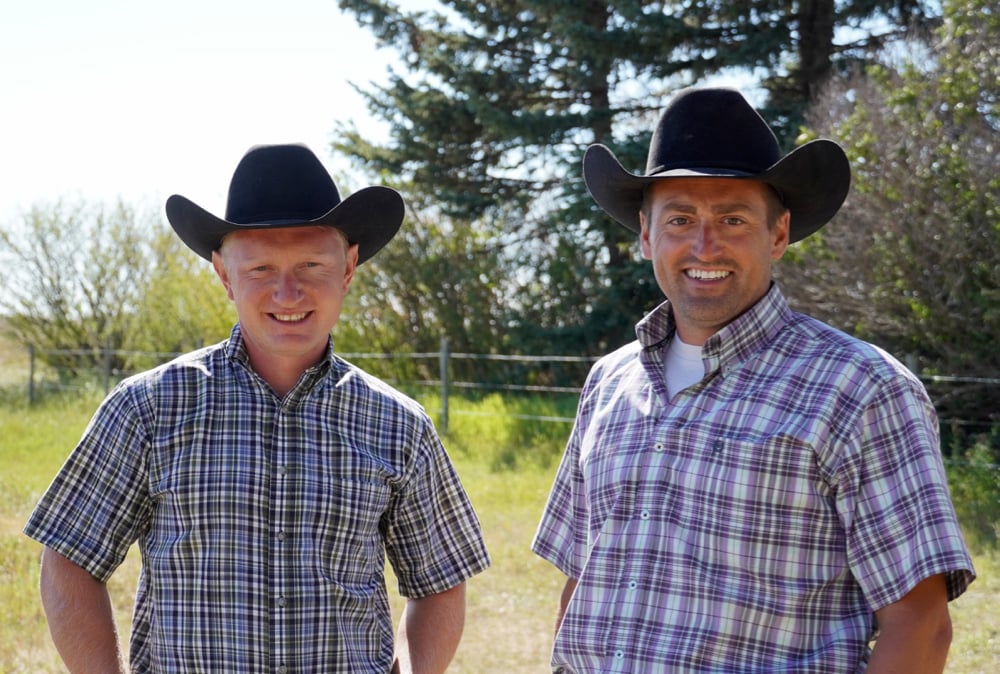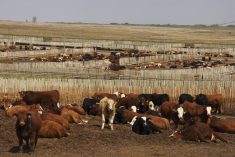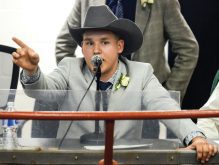Even though Courtney Gonda has been around farming her whole life, having grown up in western Saskatchewan, there is still a lot to learn about the beef industry.
The social media lifestyle and motherhood influencer got an up-close and personal tour of the Pound-Maker feedlot and ethanol plant in Lanigan, Sask., as part of the Canadian Cattle Association’s (CCA) social media campaign, “From Filters to Feedlots.” The mother of two, soon to be three, purchases half a cow a year for her own family’s consumption and there was plenty for her to learn about where that beef comes from, she says.
“Learning about what happens locally to your food is something that I think is super important.”
Read Also

Efficiency called key to reducing beef industry carbon footprint
Efficiency is key when it comes to reducing greenhouse gas emissions in the beef sector, a livestock scientist says. Sarah…
Speaking with Brad Welter, president of Pound-Maker, Gonda learned how cattle and ethanol production comes full circle at the plant as wet distillers grains and thin stillage byproducts are used to feed the cattle.
Gonda told her Instagram followers there are two protein-rich co-products, or “leftovers,” of ethanol production.
“One is a liquid, the other is a wet grain. Instead of these being sent to a landfill, they can be included as part of a balanced diet for beef cattle. One location — producing ethanol, producing beef AND reducing waste.”
It takes a conscious effort to be sustainable and efficient, says Welter in a phone interview, and people in Saskatchewan can feel confident that Pound-Maker is making that effort.
“We’re trying to be as efficient as we can in producing beef and the perception of the public. We don’t take that for granted.”
The industry as a whole is often under attack, with feedlots getting a bad rap. But Welter says they just want to tell their own story the best way they can. Research funding through the Canadian Beef Check-Off Agency helps feedlots such as Pound-Maker find products that reduce emissions at all levels of cattle production.
“Making cattle more efficient all the time has them getting to market sooner. So, we’re using less water, less feed — all those things — to produce the same amount of beef. We’re improving, but there’s always room to improve more.”
Not everyone can agree on the open market that is the internet. People are more than entitled to their own opinions, says Gonda, but they still need to do their research on where their food comes from.
There are a lot of feedlot facts that the general public isn’t aware of, says Lynsay Beavers, stakeholder engagement specialist with CCA, such as how 80 per cent of cattle feed cannot be consumed by humans anyway. Cattle become a waste management tool.
Social media influencers are a bridge between the general public and producers, says Beavers. In the lead up to the release of its documentary, Reduce, Reuse, Ruminate, the CCA invited influencers to tour cattle operations.
“The influencers were a way that we could reach an audience outside of our own sphere in agriculture and teach them along the way, but then they also shared what they’ve learned during their visit, in their own words, with their followers,” says Beavers.
Five influencers were chosen for their social media connections as well as their direct or indirect interest in Canadian agriculture and food production.
Kayla Bordignon toured Brian Thomas’s ranch in Okanagan Falls and learned about the connection between B.C. wine and cattle production.
“Cheers to beef cattle completing the circle of sustainability in our B.C. wine industry,” she wrote on Instagram.
Bordignon’s tour was the only cattle operation that wasn’t a feedlot, says Beavers. It was chosen for the unique circular food system — feeding grape waste, then composting manure back into the vineyard.
The campaign also included Manitoba dietitian Nita Sharda, grill master sisters from Ontario Maddie and Kiki Longo and Alberta mom influencer Jasmin Shannon.
With such a widespread audience, Beavers says they were trying to reach consumers from coast to coast.
“Increases in knowledge lead to more positive impressions,” says Beavers. Reaching consumers and teaching them about Canadian cattle production has been a way for CCA to build public trust.
Becky Zimmer is a freelance journalist based in Humboldt, Sask. Her farming and small-town background has given her a wealth of knowledge and passion for Prairie journalism, provincial and national government policies, civic politics, community events and the challenges of rural health care and infrastructure.
















